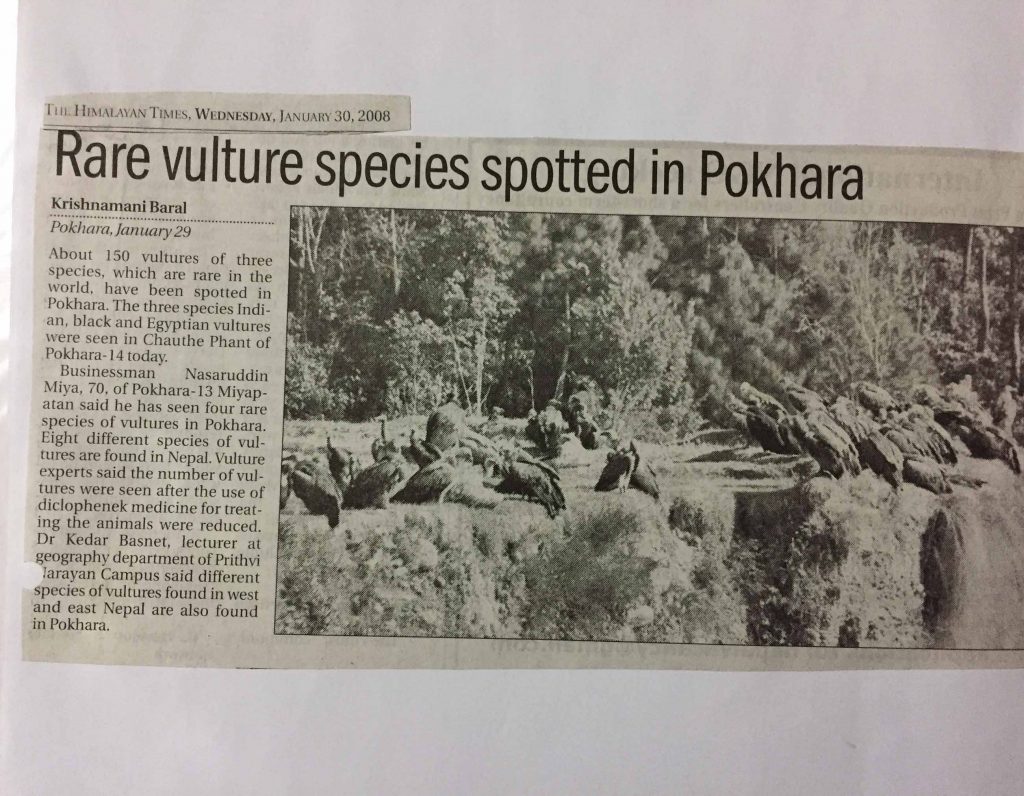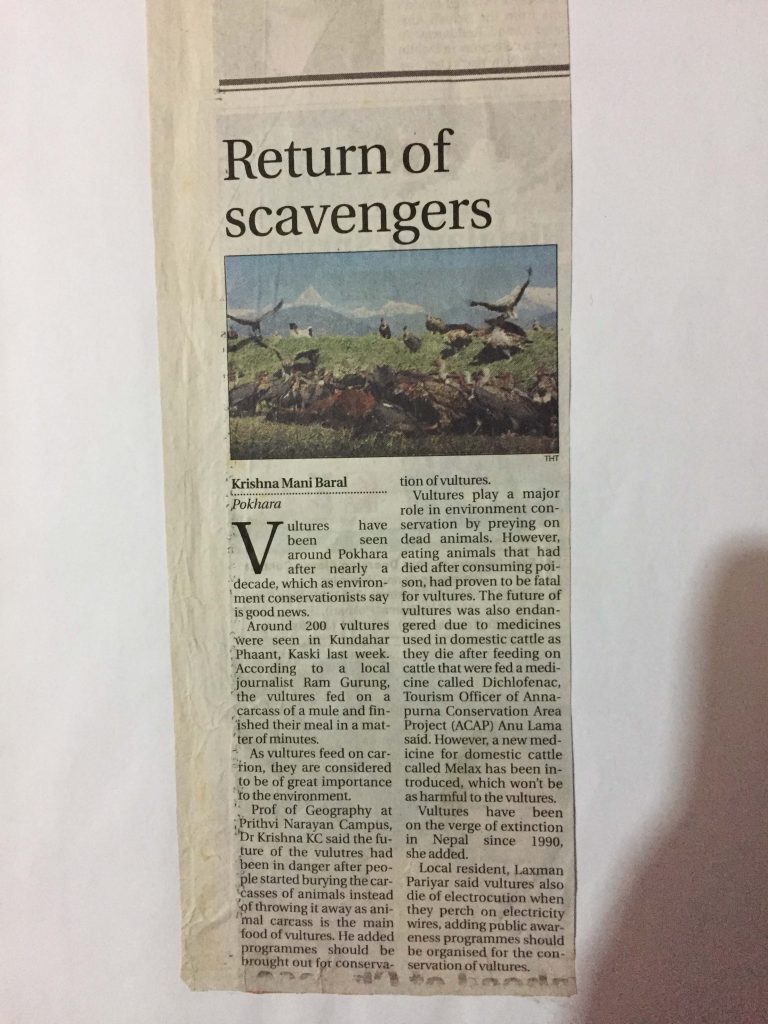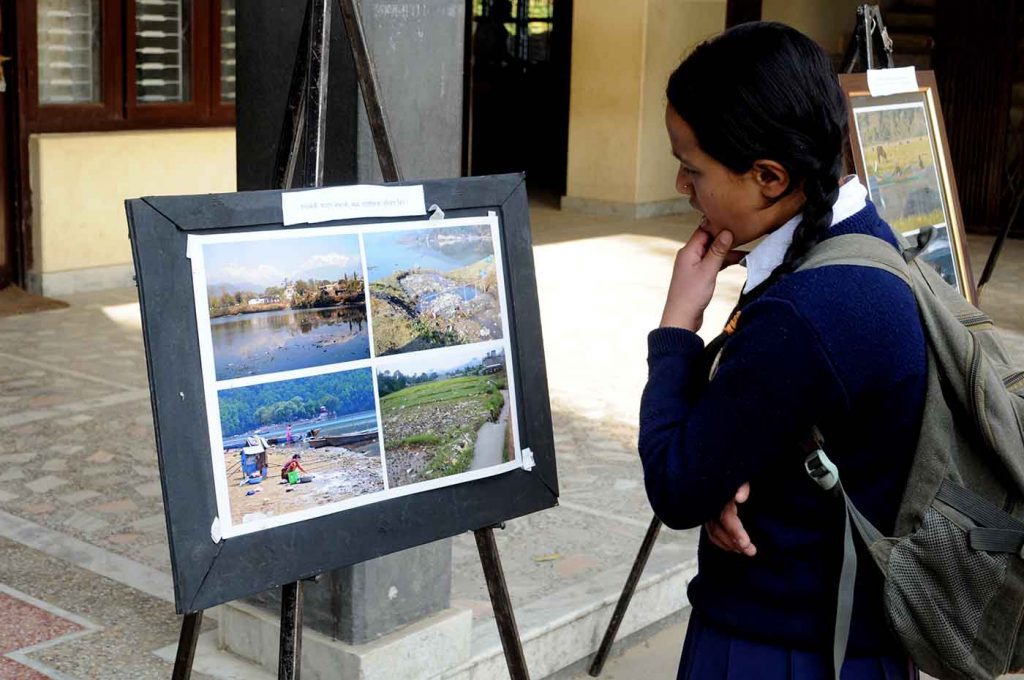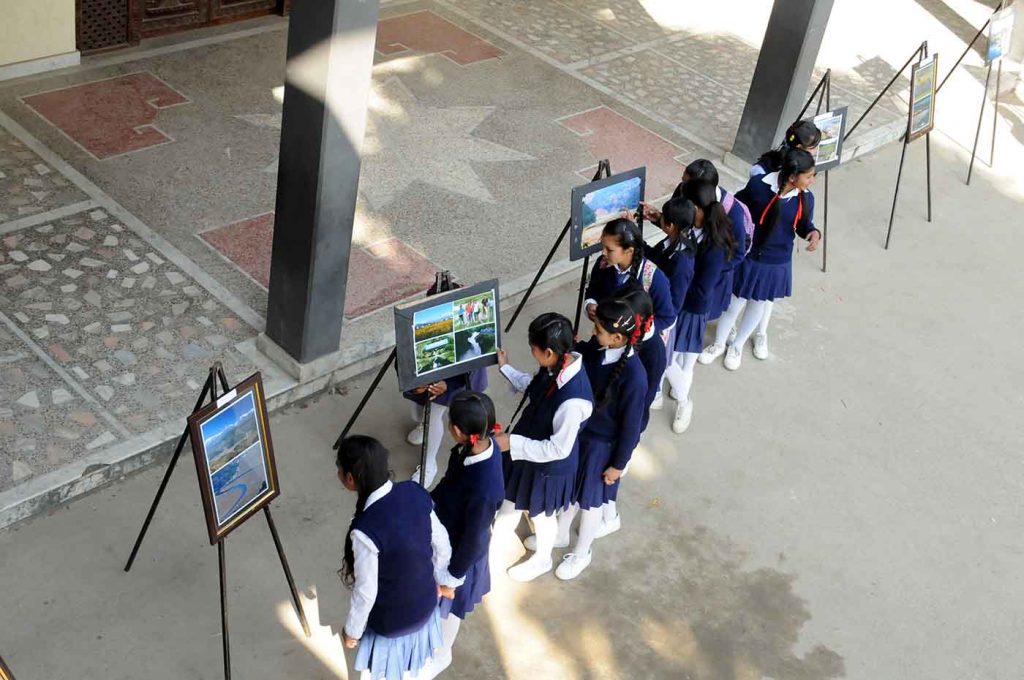Journo who’s a conservationist at heart
SHARADA ADHIKARI
KATHMANDU: While in Class X, he had written a poem protesting the violence against animals. This was the his first ever effort in his life for “environment conservation, especially the animals”.
But Krishna Mani Baral had never thought that he would be doing this through journalism. Born and brought up in Pokhara, Kaski, Baral is a photojournalist with The Himalayan Times and Annapurna Post dailies.
However, this is an incomplete introduction of the man — for he is an ardent advocate of vulture conservation and is active on animal rights as well as wetlands protection. To cut short, Baral is an environment conservationist who does it through his profession of photojournalism, photography as well as through his organisation Animal Rights Nepal.

Beginning from
a reporter
Baral, a student of Sociology and English, started working as a freelance reporter in Pokhara from 1998. Though he did not dream of a career in journalism, he was motivated in this field through his journalist uncle and friend.
Initially he used to write on “almost everything”. But one of his first stories on environment related issues was “about the pollution of Phewa Lake”. His house is near the scenic Phewa Lake and seeing his work, the locals would say, “He has love for the lake”. Such feedback always motivated Baral, who also penned stories on pollution of Seti River, economic benefit of cash crops and stories that urged people not to leave their land barren.
And to sharpen his knowledge in journalism, Baral also took different trainings . After freelancing for a few years, he worked in a local paper Samadhan Dainik as well as Deshantar weekly.
Playing with light
“Once you start working in journalism, you get addicted to it,” shares Baral who was “also addicted to journalism”. Hence, when there was a vacancy for a photojournalist for THT and AP in the year 2061 (2004), he gladly applied and was selected as well.
A reporter now had changed into a full-fledged photojournalist based in Pokhara.
During that time he “had heard a lot about vultures in the media and known that they were dying because of diclofenac”.
This passionate guy began to follow the vultures that would fly the skies of Pokhara. He would take their photographs that served a dual purpose — “ I used to give them for the newspapers as well as kept in my personal collection”.
His first work on vultures was published in the year 2006 in both THT and AP.
But vultures were not his only beat and he did not have the whole day to follow vultures only. “As you know the journalists and photojournalists of Mofasal have to cover every beat and every news, and same is the case with me,” expresses Baral who managed some time for the topic of his interest.
All the credit goes to hard work because the person who had “almost no idea on types of vultures” is now a confident journalist who can “identify each species”.
It was his self-study on the issue of vultures that developed “my interest in them”.
“There was no alternative to diclofenac during 2006 and I felt that this bird should be conserved which motivated me to work for this species,” reveals Baral who has done photo exhibitions of vultures in different parts of the nation as well.
In the year 2010, he also did a exhibition of a photo story on Phewa lake as well as of wetlands of Nepal with “an urge to conserve the wetlands”.
Conservation
in his heart
He is hard-working and doesn’t mind “to spend even a whole day to capture the best shot of vultures in his camera”.
Also, there is no doubt that this 38-year old photographer is passionate about his work for he is the founding president of Animal Rights Nepal (ARN).
“ARN is an organisation that works to raise awareness on conservation of wildlife, domestic animals and environment mostly in schools among school students,” reveals Baral who together with personalities of different walks of life founded the organisation in 2009 (2066 BS). It is a kind of self-sustained organisation as they “are running it with our own money rather than support from donor agencies though we sometimes get support from Nepal Tourism Board and local
organisations”.
Why students? “Because once they learn things they share it with their parents, family and guardians that can make great impact to work for conservation”.
Support and
appreciation
In his over a decade long career in journalism, Baral recently bagged the WWF Media Conservation Award. He is the recipient of an award by Federation of Photo Journalists Nepal (FPJN) for his contribution in vulture conservation.
And he is happy for his hard work that “has been acknowledged”.
Once a friend took him to meet an American geologist who has “positive response for my efforts in vulture conservation and has assured to help me publish a school book on vultures”.
While doing environment journalism, he has not received any threats so far, there are usually words of motivation. But while he was once going out with his wife in a motorbike, an interesting incident had happened. “On the way I saw people working in a paddy field and took their photographs. But those people scolded me using bad words and my wife was really furious with me. She threatened that she won’t go anywhere with me when I had camera.”
But the next day when that was main photo in THT, she regretted scolding him and was happy.
Fighting the odds
“If there is photo of political issue, it gets high value as compared to environmental issues in media,” Baral shares of his experience but he feels environment sector “needs equal priority as environment is related to daily life of everything from human to animal to nature and more”.
And for those who are doing environmental journalism, he urges, “Do the investigative and more in-depth stories so that the efforts of conservation can be made possible” because journalism is one such sector “that reaches the mass and has a huge impact”.
-Published in THT 2012








